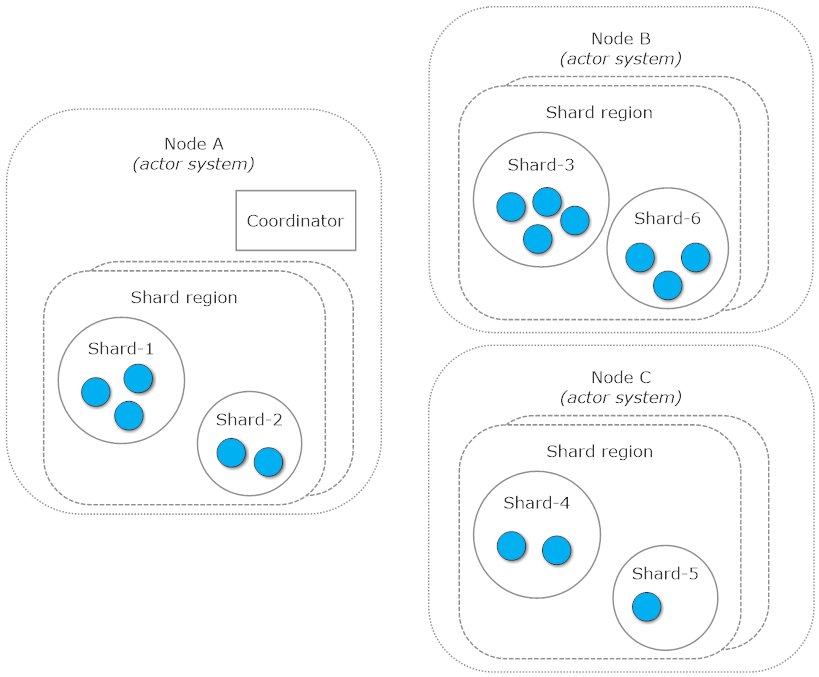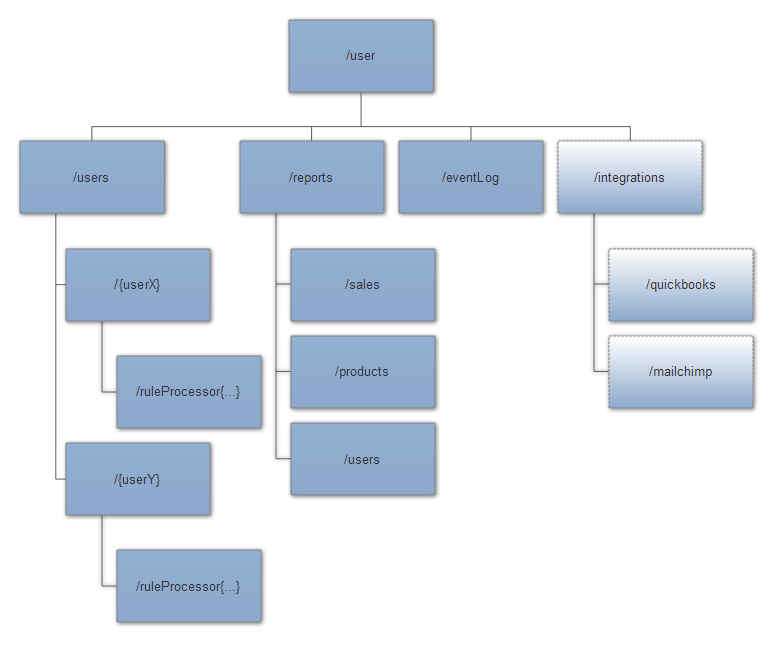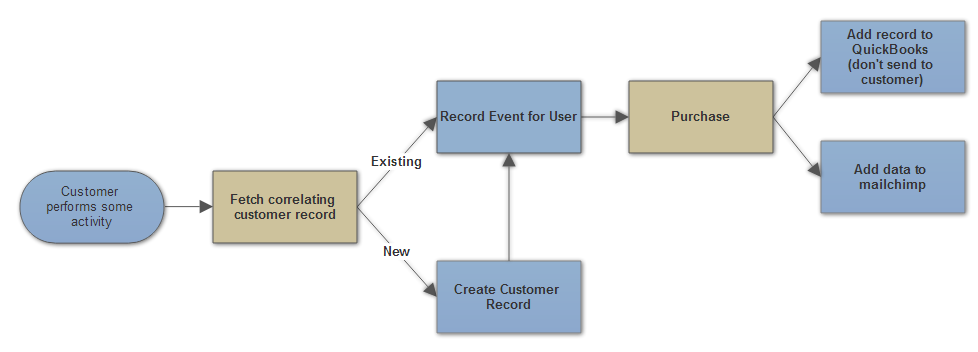Technical Overview of Akka.Cluster.Sharding in Akka.NET
How Akka.Cluster.Sharding Allocates Shards, Rebalances, and More
11 minutes to readWe have an updated guide to Akka.Cluster.Sharding that incorporates newer APIs and practices. Please see “Distributing State Reliably with Akka.Cluster.Sharding” instead.
In our previous post about using Akka.Cluster.Sharding we looked at the module from an end-user’s perspective. Today we’ll provide a little more insights into how this plugin works internally.
Cluster sharding depends on several types of actors:
- Coordinator - one per entity type for an entire cluster.
- Shard region - one per entity type per each cluster node, where sharding should be enabled.
- Shard - there can be many on each shard region, and they can move between shard regions located on different nodes.
- Entity - actors defined by the end-user. There can be many on each shard, but they are always bound to a specific shard.
All of them can be visualized using diagram below:

If you look at actor paths of the entities you’ve created you’ll see that they reflect the structure of that hierarchy. They follow the pattern /user/sharding/<typeName>/<shardId>/<entityId>. Given that, it’s easy to infer that /user/sharding/<typeName> is path to a shard region while subsequent path segments are responsible for shard actor and entity actor.





